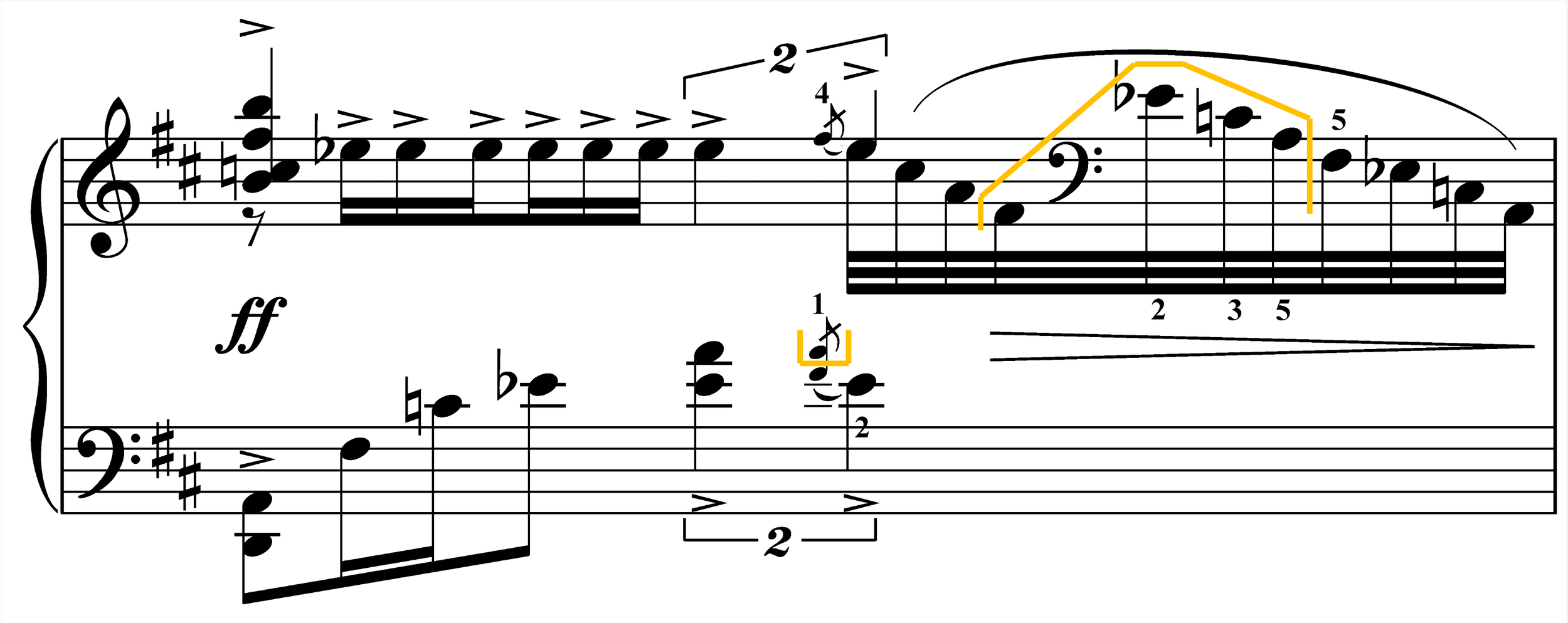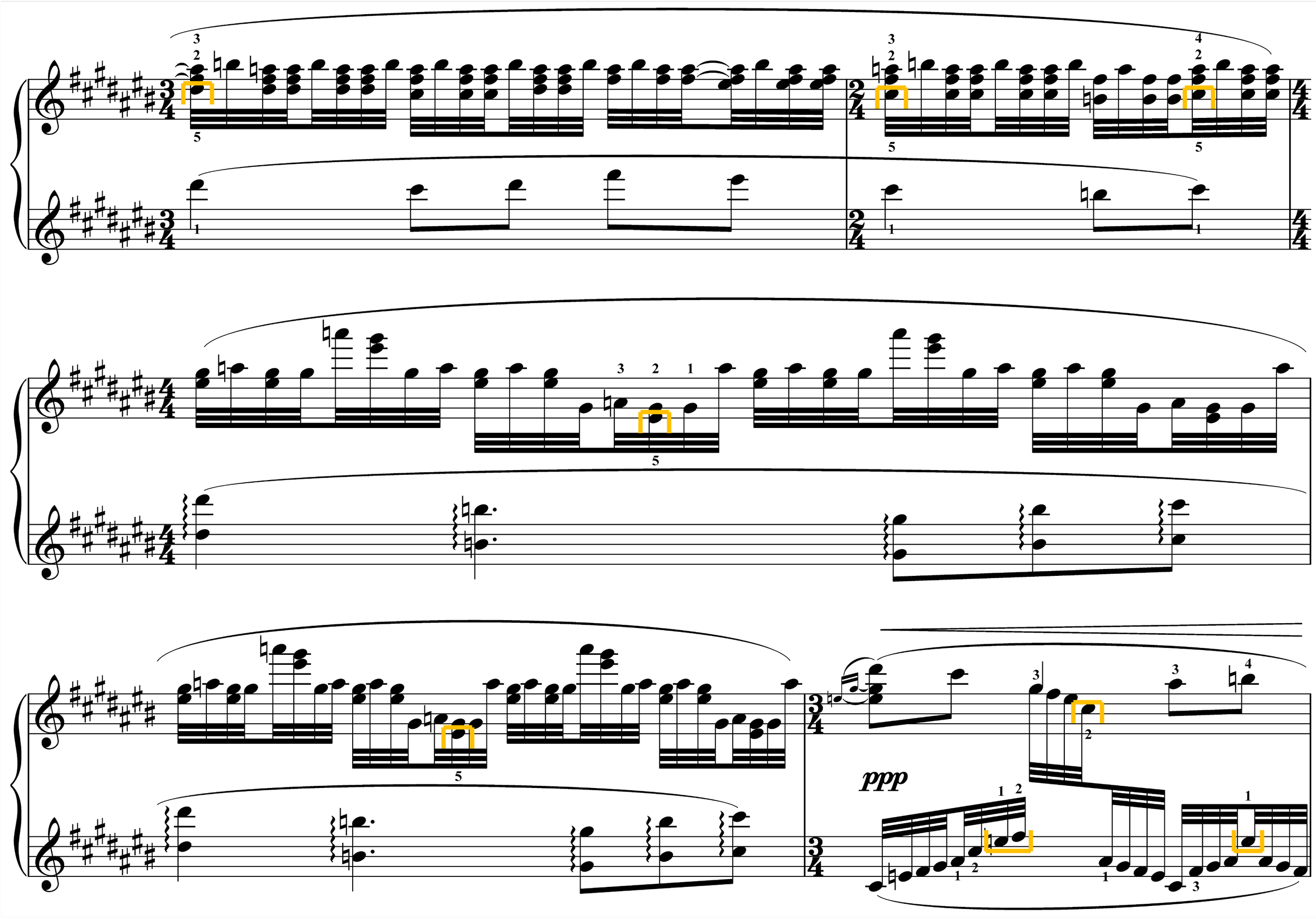SPECIAL COLLECTION | Dorothy Brandwein’s Ravel Fingerings
Published on 4/27/2022 with the author’s permission
First appeared in Dorothy Woster Brandwein, "Divisi Fingering in Selected Passages from Ravel's Solo Piano Works" (DMA diss., University of Missouri–Kansas City, 1981), 55, 89.
54: “The rolled chords in Example 38 must all be played quickly so they do not disturb either the rhythmic pulse or the phrasing. In each case, divisi fingering eliminates the wide stretch required of one hand. Example 38 illustrates how the notes in each rolled chord may be shared by both hands. …[T]he redistribution of notes in ‘Alborada del gracioso’ insures the crispness and brilliance of the measure.”


















